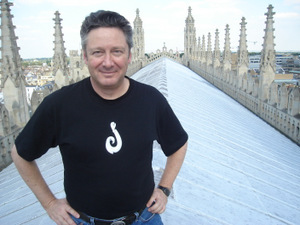News
Published 21 November 2012Inaugural Mason Durie Medal

A new medal for advances in the frontiers of social science was presented by the Royal Society of New Zealand at the 2012 New Zealand Research Honours event.
The inaugural Mason Durie medal was presented to Professor Russell Gray FRSNZ, Deputy Head (Research), School of Psychology, The University of Auckland for his pioneering social science research on questions of the fundamental relationships between human language, cognition and biology.
“As the Royal Society of New Zealand, we celebrate research excellence across the full range of disciplines,” says Sir David Skegg, President of the Royal Society of New Zealand.
“We are very pleased to be able to award this new medal for social science in honour of Professor Sir Mason Durie, who was until recently the Assistant Vice-Chancellor (Māori and Pasifika) and Professor of Māori Research and Development at Massey University. Professor Durie’s research on health outcomes, his development of health policy in New Zealand and his extensive work with Māori community health providers is widely recognised.”
“Professor Russell Gray is a worthy inaugural recipient of this medal, for his pioneering social science research. His computational evolutionary methods have helped solve the 200-year-old debate about the origin of Indo-European languages and he has also made significant contributions to the fields of cultural evolution and animal cognition.”
Professor Gray’s research interests are diverse but what underlies them is evolutionary theory. He has pioneered the application of evolutionary thinking and methods to the social sciences, applying these methods in a systematic way.
“For example, in our work on the evolution of language what we’ve been doing is using tools and ideas from evolutionary biology to make inferences about languages and what they tell us about the human mind,” says Professor Gray.
“We are using the same type of computational methods which biologists use to analyse DNA to build family trees to analyse vocabulary and language evolution in European and Asian languages.”
The research by Professor Gray and his colleagues supports the controversial hypothesis that Indo-European languages originated in Anatolia 8,000 to 9,500 years ago and spread with the expansion of farming.
The research examined basic vocabulary terms and geographic information from 103 ancient and contemporary Indo-European languages. The location and age of the languages’ common ancestor supported the Anatolian hypothesis.
More relevant to New Zealand, Professor Gray and colleagues have been using similar methods to study the peopling of the Pacific.
“We built a web accessible database of vocabulary for Pacific and island Southeast Asian languages and analysed the information using sophisticated computational methods derived from evolutionary biology.”
“Our analyses revealed that the Pacific was colonised in a series of pulses and pauses starting from Taiwan about 5,200 years ago.”
Another area of Professor Gray’s research is on New Caledonian crows, to study how complex cognitive abilities evolve.
“We have been studying these amazing crows in New Caledonia that manufacture tools more complex that tools that even chimpanzees can make.”
They have been investigating how the crows pass on the information on complex tool use to their offspring, and how well the crows understand the tools they are using.
Professor Gray says the technology is passed on from trial-and-error learning in which the parents guide the learning by letting the young crows borrow their tools; it takes about a year before the young crows can build their own.
The research has also found that the crows have a high level of understanding about tool use, shown by their ability to plan steps ahead and use a tool to reach another tool and so forth to then reach food.
A third area of Professor Gray’s research is in the evolution of culture. Recent work in the Pacific region has been linking an evolutionary understanding of the changes to culture to patterns of genetic diversity.
“We have been looking at changes in marital residence patterns in the Pacific – the evolution of those– and seeing if that might explain the different patterns of genetic data that we see,” says Professor Gray.
